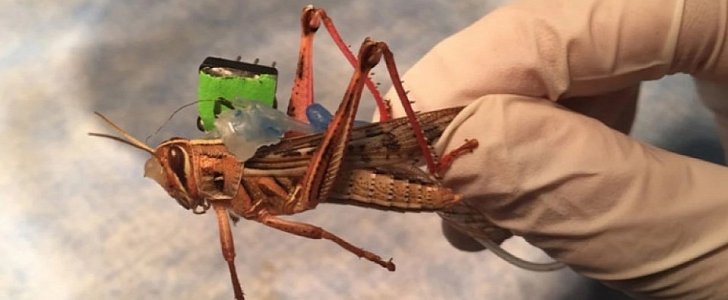Locusts might be the next big thing for the US Navy. At least, when it comes to the next invention that they can announce in public.
Instead of growing as many locusts as possible and developing a way of dumping them on the enemy ground in an attempt of a biblical attack, the US Navy wants to have cyborg insects. You read that right. We are talking about robotically-enhanced locusts, which will help the US Navy in more ways than a theoretical locust attack would.
The plan has been penned by biomedical engineering professor Baranidharan Raman, along with his team at the Washington University in St. Louis, which will receive the grant from the US Navy over the period of three years. The team wants to turn regular locusts into bomb detectors, the Washington Post reports.
The logic behind the system involves taking advantage of the powerful and sensitive olfactory system (that the term for the sense of smell) which every locust already has, and humans cannot replicate it in an artificial manner. So instead of making a sniffing device, they want to make insects find bombs by using its sensors and an array of electronic devices.
The first step of the process is implanting sensors into the neural networks of locusts, and then figuring how to record and decode the readings from their antennas, which they use as an olfactory sensor. Each animal recovers from surgery in “a few hours,” and is ready to roam the world without knowing they have electrodes into its brain.
For the locusts to be mobile and useful in the field, they must be trained to smell and react to the scent of explosives, including all of the potentially dangerous compounds and mixes.
Once locusts are trained to sniff explosives, they will receive miniature backpacks, like the one pictured in the top photo, to light up an LED to red if they feel anything that resembles a bomb. Otherwise, it shines green, to show the “operator” of the locust where it stands.
Once this is done, locusts will get tattoos, made with biocompatible silk. These would be done on their wings, so that a laser could be shined on one of the tattoos, and the heat from the material would make the insect fly in the corresponding direction.
Scientists say it can be done. This would mean to be terrified of tattooed cyborg locusts that will be enlisted in 2020. There are also subtle career options here - you could become a locust tattoo artist, or a locust operator.
The plan has been penned by biomedical engineering professor Baranidharan Raman, along with his team at the Washington University in St. Louis, which will receive the grant from the US Navy over the period of three years. The team wants to turn regular locusts into bomb detectors, the Washington Post reports.
The logic behind the system involves taking advantage of the powerful and sensitive olfactory system (that the term for the sense of smell) which every locust already has, and humans cannot replicate it in an artificial manner. So instead of making a sniffing device, they want to make insects find bombs by using its sensors and an array of electronic devices.
The first step of the process is implanting sensors into the neural networks of locusts, and then figuring how to record and decode the readings from their antennas, which they use as an olfactory sensor. Each animal recovers from surgery in “a few hours,” and is ready to roam the world without knowing they have electrodes into its brain.
For the locusts to be mobile and useful in the field, they must be trained to smell and react to the scent of explosives, including all of the potentially dangerous compounds and mixes.
Once locusts are trained to sniff explosives, they will receive miniature backpacks, like the one pictured in the top photo, to light up an LED to red if they feel anything that resembles a bomb. Otherwise, it shines green, to show the “operator” of the locust where it stands.
Once this is done, locusts will get tattoos, made with biocompatible silk. These would be done on their wings, so that a laser could be shined on one of the tattoos, and the heat from the material would make the insect fly in the corresponding direction.
Scientists say it can be done. This would mean to be terrified of tattooed cyborg locusts that will be enlisted in 2020. There are also subtle career options here - you could become a locust tattoo artist, or a locust operator.



